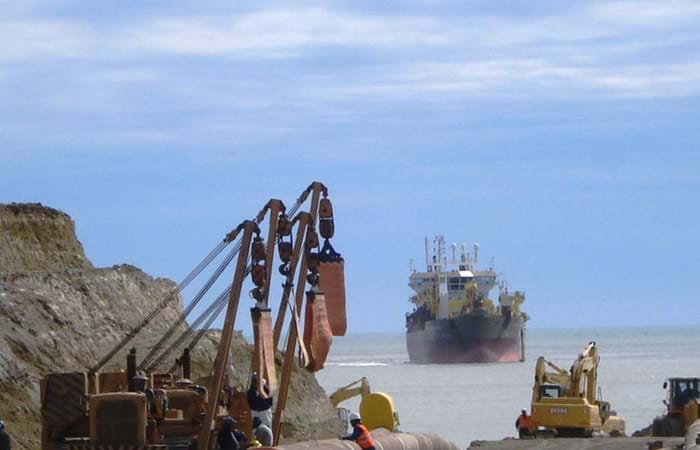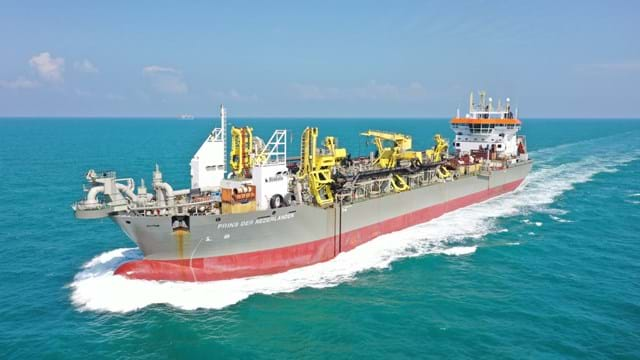The project involved the construction of a new, strategically important, 24" natural gas pipeline across the Strait of Magellan, linking Cabo Espíritu Santo in Tierra del Fuego province with Cabo Vírgenes in Santa Cruz province. The new pipeline was built as an expansion of the existing San Martín pipeline in an effort by the government to increase gas supplies from Tierra del Fuego to the Argentinian mainland.
The new submarine pipeline runs parallel 50 meters west of the existing pipeline that was built in 1978. The link was the final piece of a significant onshore project involving the construction of a pipeline stretching thousands of kilometers to carry the gas recovered from fields in the south to the distribution network in the north. The ‘Gasoducto Transmagallánico’, as the pipeline is called in Argentina, will transport 18 million m3 of gas a day. Boskalis Offshore’s scope consisted of pre-trenching both shore approaches, pipeline pull-in and pull-out at the landfalls, submarine tie-in, hydrotesting and backfilling of the trenches. The multidisciplinary project has been completed in eight months after contract award, which is exceptionally fast considering the remote location, limited infrastructure, lack of local facilities and complexity of the project. Weather conditions in the Strait of Magellan can be notoriously severe. The harsh local conditions feature rapid weather changes, storms, strong currents and a tidal range of more than ten meters.

